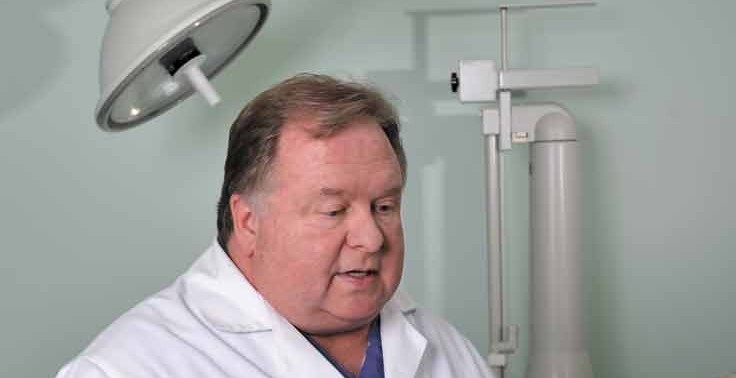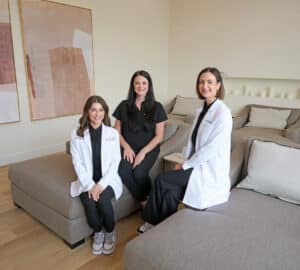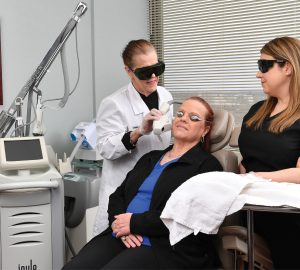Few spectacles are as colorful and exciting as fireworks … or as dangerous. One man found that out the hard way when a large, mortar-type device exploded in his face last Fourth of July, destroying his nose and causing extensive soft tissue and skeletal damage. But today, thanks to physicians at Washington University Facial Plastic Surgery Center, you’d never know he was once severely disfigured.
“The patient was in bad shape when we first saw him,” recalls Dr. Gregory Branham, professor and chief of facial plastic and reconstructive surgery at Washington University. “The explosion shattered his upper jaw and ripped most of his nose off, so he could no longer breathe through it. Our challenge was to fix the external damage as well as the internal nasal structure and lining.”
The task required a team approach. “Our goal, as always, was to restore healthy function and appearance,” says Dr. John Chi, assistant professor of facial plastic and reconstructive surgery. Upon arrival at the Barnes-Jewish Hospital ER, the patient’s burns and soft tissue injuries were cleaned and repaired. Then Branham, Chi and their team performed several surgeries over a five-month period, first repairing the patient’s jaw and realigning his bite. After four months, they did tissue grafts to restore the lining of the nose and provide a fully functioning airway. Chi used cartilage grafted from the man’s ribs to build a skeletal framework for a new nose. Branham reconstructed the outer skin by covering the graft with a flap of tissue, plus an artery and a vein, from the man’s forehead. Three weeks later, with independent blood supply to the new skin established, Branham cut away the transferred artery and vein and finished molding the new nose.
It’s not every day that a patient shows up in the ER with most of his nose missing. “But this man represents the full spectrum of what we do every single day,” Branham says. “Many of the procedures he underwent, including skin flaps, scar revision, and soft tissue and skeletal repair, are also used with cancer patients during reconstructive surgery and with individuals who suffer birth disfigurements or facial injury.” Cartilage harvested from ribs is often used in revision rhinoplasty, when patients aren’t pleased with nose jobs they’ve received elsewhere, he notes. The center has the technology and know-how to perform multiple procedures that tackle every component of reconstruction at once. Many procedures can be done in the office, with local anesthetics or mild sedation, he adds.
“Dr. Branham and I want to help patients look and feel as if they were never injured at all,” says Chi, whose expertise also includes the treatment and management of facial paralysis. “No one should have to endure the emotional pain caused by disfigurement. We’re not satisfied until our patients can pass the ‘grocery store test,’ when they can go to the store without hearing little kids say, Mommy, what’s wrong with that man’s face? Yes, we restore function—but we also restore self-confidence.”
Photo by Bill Barrett
Pictured: Dr. Gregory Branham
[Washington University Facial Plastic Surgery Center is located at 605 Old Ballas Road, Ste. 100. For more information, call 314.996.3880 or visit facialplasticsurgery.wustl.edu.]








